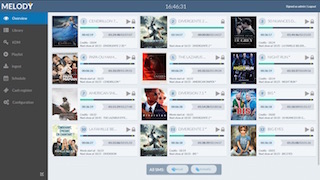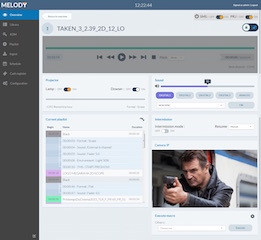 For more than a decade, theatre management software has been the backbone of every cinema that made the transition to digital projection technology, which is to say, virtually every movie theatre in the world. Many different manufacturers provide their own approach to the challenges that TMS was designed to address. I recently spoke with five TMS manufacturers and asked if they thought exhibitors were getting the most from their TMS, where their TMS fits in a movie theatre enterprise and, most of all, what new ideas in TMS can we expect to see when the industry gathers in Las Vegas next week for CinemaCon 2017. We’re presenting the companies alphabetically and will be offering their answers over the next five days. Today’s company: CinemaNext.
For more than a decade, theatre management software has been the backbone of every cinema that made the transition to digital projection technology, which is to say, virtually every movie theatre in the world. Many different manufacturers provide their own approach to the challenges that TMS was designed to address. I recently spoke with five TMS manufacturers and asked if they thought exhibitors were getting the most from their TMS, where their TMS fits in a movie theatre enterprise and, most of all, what new ideas in TMS can we expect to see when the industry gathers in Las Vegas next week for CinemaCon 2017. We’re presenting the companies alphabetically and will be offering their answers over the next five days. Today’s company: CinemaNext.
Digital Cinema Report: Do exhibitors fully understand all the benefits that TMS can provide?
Frederic Verdiere, head of software solutions division, CinemaNext: For most exhibitors, the theatre management system has become an essential tool to manage their projection equipment. Exhibitors have realized they can enjoy a better cost structure and increased savings while focusing their efforts on their audiences. At the same time, the digitalization of the industry led exhibitors to increase their revenues and enjoy multi-programming strategies through the TMS. However, the benefits of having the right TMS for their cinema offers great potential and exhibitors are not always aware of all the available functionalities. For example, with Melody TMS, we just launched a new service that allows exhibitors to use their smartphone or tablet as a remote control to transform the auditorium into a conference room by controlling every aspect – content, screening time synchronization from a point of sale system, automatic import of advertisement packages, etc.
 DCR: Can TMS be used to manage and improve the lobby experience or POS purchasing?
DCR: Can TMS be used to manage and improve the lobby experience or POS purchasing?
FV: Yes. Definitely. The TMS can easily serve as the link between several software solutions, including digital signage and PoS, to improve the lobby experience. It also allows exhibitors to automatically manage last-minute scheduling changes. Our range of software was not only designed to be used independently but also interconnected with other software to increase the benefits for any type of exhibitor.
DCR: Can TMS help exhibitors grow and maintain customer loyalty groups?
FV: In a sense, yes. The flexibility we provide exhibitors in the management of their programming through our TMS can help them better meet their audiences’ desire for certain types of content. It’s an important subject of research and development. At CinemaCon, we will introduce a brand-new platform connecting exhibitors and content owners with a full range of content search options.
DCR: What improvements and advances in TMS can we expect to see at CinemaCon 2017?
FV: In CinemaNext’s software division, we are working hard to finalize what we call a central scheduler, which will provide automation options to exhibitors including to help easily manage pre-shows ahead of a feature film presentation. This will be a central management tool that better suits the needs of cinema circuits. We are also developing a new, user-friendly graphic interface that will provide additional support to exhibitors. Thanks to this tool, our clients can be in direct touch with our five customer service centers/NOC across Europe. We will demonstrate these new functionalities on our booth.
